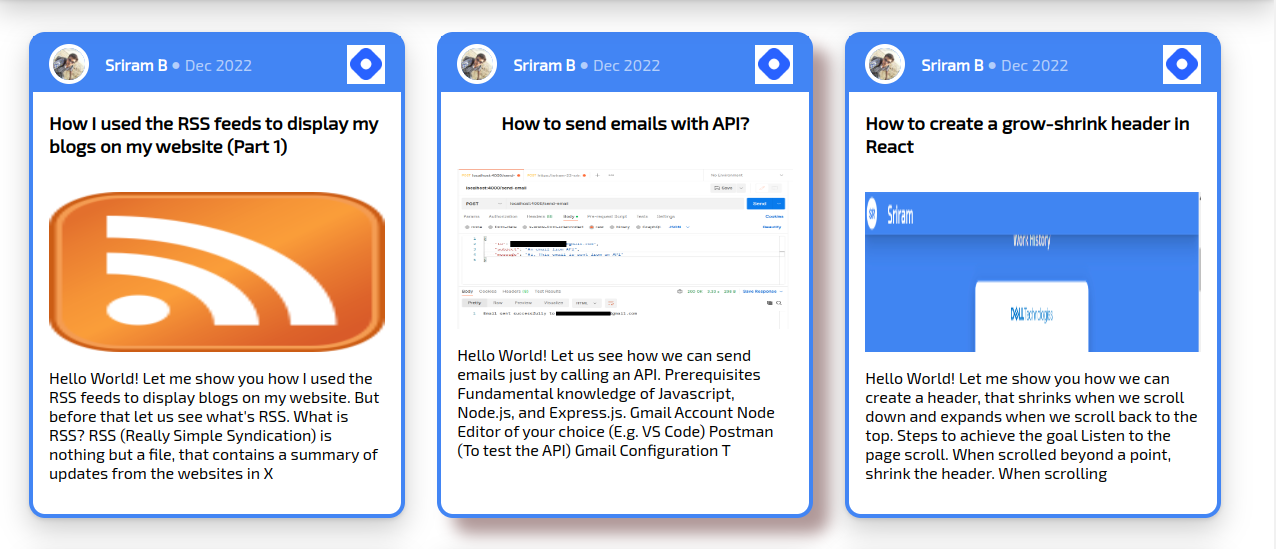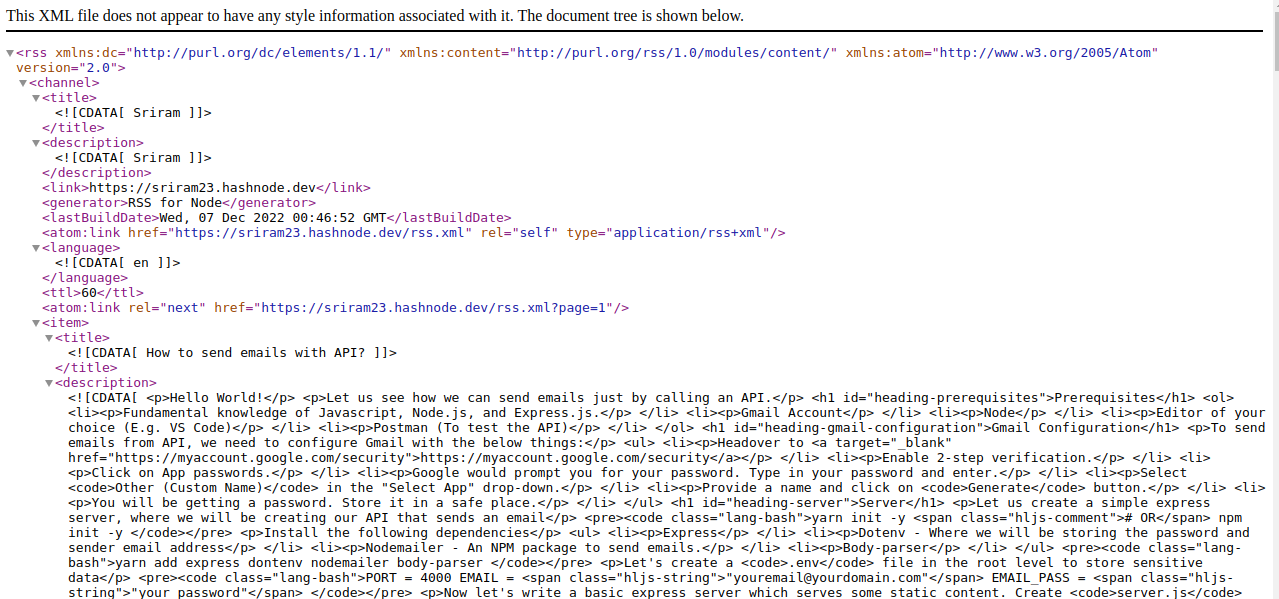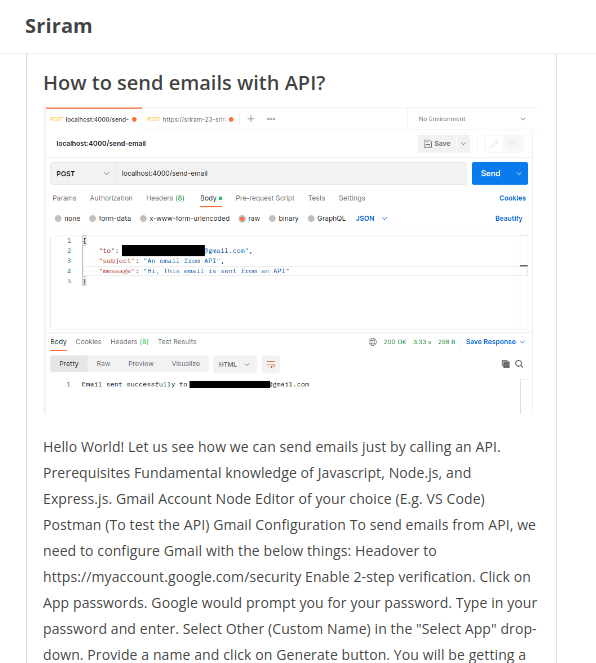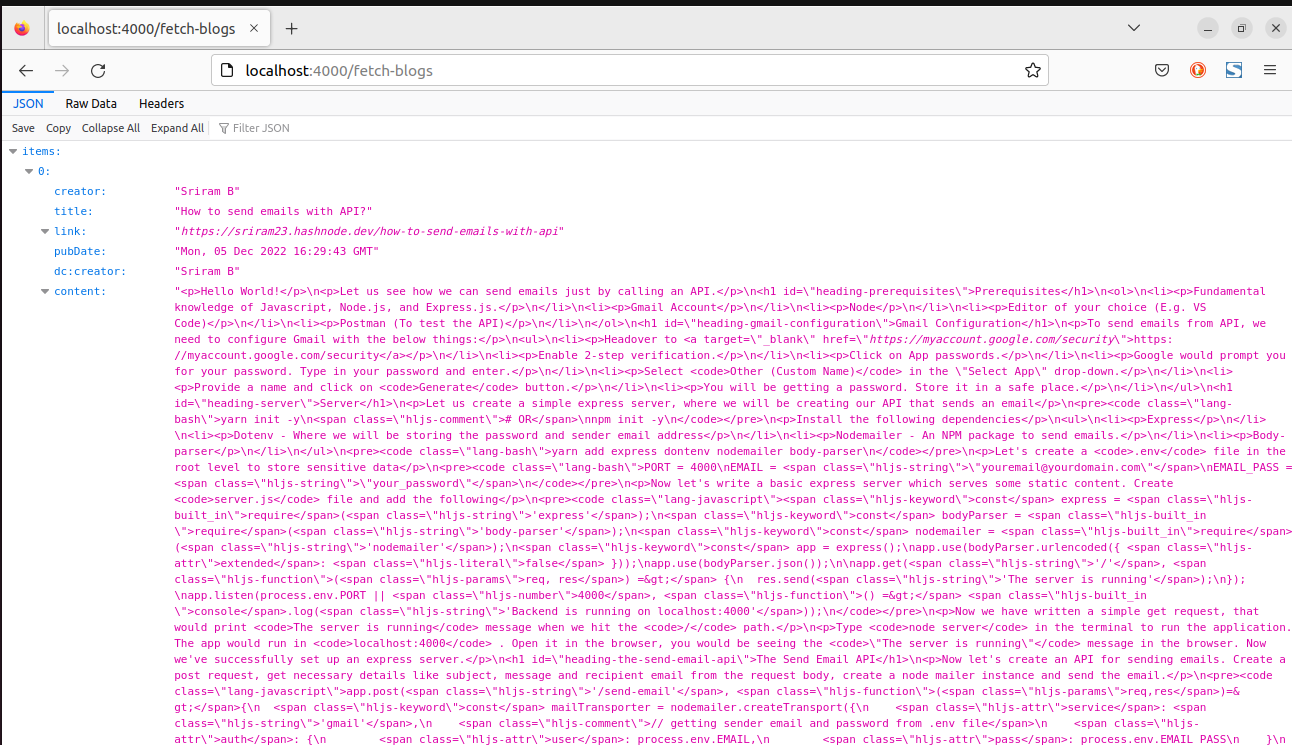How I used the RSS feeds to display my blogs on my website (Part 1)
 Sriram B
Sriram B
Hello World!
Let me show you how I used the RSS feeds to display blogs on my website. But before that let us see what's RSS.
What is RSS?
RSS (Really Simple Syndication) is nothing but a file, that contains a summary of updates from the websites in XML format. We can find the RSS feeds of the website with the RSS icon.

An RSS feed would look like this:

RSS feed contains details like titles, descriptions, image links, etc. We can make use of the RSS feed viewers that are available online. Below is an RSS feed parsed with an RSS viewer online.

How I used RSS to get my blogs?
As we saw earlier, the RSS feed contains meta-data about the website like title, description and image link. I used an express server to convert the RSS feeds, which are in XML format to JSON format so that I can integrate them easily into my website.
Steps to achieve:
Create a simple express server.
Fetch the RSS feed.
Convert RSS feeds to JSON.
Implementation
A simple express server
First, let's create an express server where we will be fetching and parsing the RSS feeds.
yarn init -y
# or
npm init -y
Install the following dependencies:
Express
RSS Parser (rss-parser) - An npm package to convert RSS feeds to JSON.
yarn add express rss-parser
Let's create the server.js and run a basic server.
const express = require('express');
const app = express();
app.get('/', (req, res) => {
res.send('The server is running');
});
app.listen(4000, () => console.log('Server is running on localhost:4000'));
Type node server in the terminal, we could see the app start running in localhost:4000. When we open it in the browser, we could see the message The server is running printed.
API to fetch blogs from RSS feeds
Now let's write an API to fetch the posts from RSS feeds. For that, we would be using the rss-parser npm package. We'll have to pass the feed URL to the rss-parser's parseURL function, which would return a JSON response. Below would be the code for it.
// importing rss-parser
let Parser = require('rss-parser');
// creating an instance for the rss-parser
const parser = new Parser();
app.get('/fetch-blogs', async(req, res) => {
// process.env.HASHNODE_FEEDS would be our RSS feed link
parser.parseURL(process.env.HASHNODE_FEEDS).then(resp => {
res.status(200).send(resp)
}).catch(err => res.send(err))
})
The final code would be:
const express = require('express');
let Parser = require('rss-parser');
const parser = new Parser();
const app = express();
app.get('/', (req, res) => {
res.send('The server is running');
});
app.get('/fetch-blogs', async(req, res) => {
parser.parseURL(process.env.HASHNODE_FEEDS).then(resp => {
res.status(200).send(resp)
}).catch(err => res.send(err))
})
app.listen(4000, () => console.log('Server is running on localhost:4000'));
Now we are done with writing the API, let's test it.
Run the server typing
node serverin the terminal.Head over to the browser and hit
localhost:4000/fetch-blogsin the URL bar.
We would be able to see the JSON response of our RSS feeds. Since this is a 'get' request, we can run and test this in the browser itself.

Now we can fetch the JSON response from the RSS feed. In the next post, I will be writing about how we can make use of this JSON to display our posts in a UI application (website). Stay tuned!
Hope this is helpful to you. Looking forward to your feedback. Thank you!
Subscribe to my newsletter
Read articles from Sriram B directly inside your inbox. Subscribe to the newsletter, and don't miss out.
Written by

Sriram B
Sriram B
As a software engineer with 6+ years of experience, I love sharing insights on building scalable, responsive, and user-friendly web applications using React and JavaScript. My passion lies in creating seamless user experiences, blending technical expertise with creative problem-solving. Beyond development, I explore emerging technologies like Docker, Kubernetes, and Python, staying ahead in the ever-evolving tech landscape. Through this platform, I aim to share knowledge, spark discussions, and collaborate with like-minded professionals. Join me on this journey as we dive into the world of web development, innovation, and future-ready digital experiences!